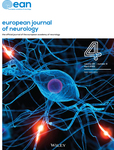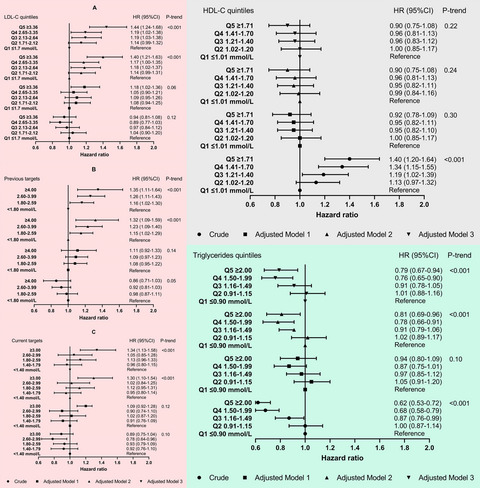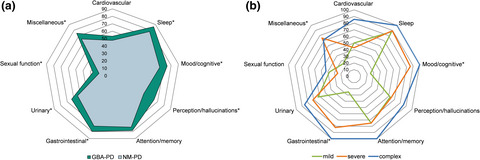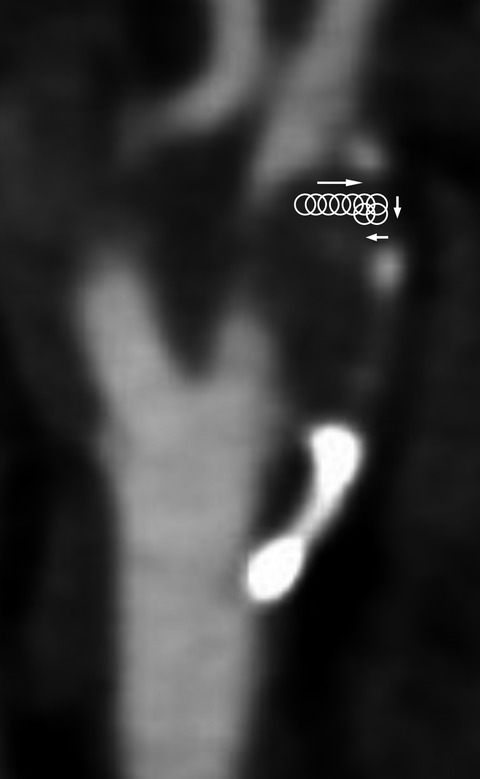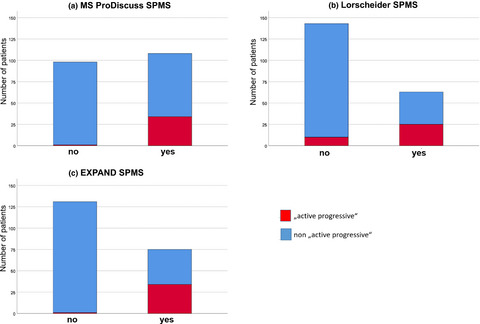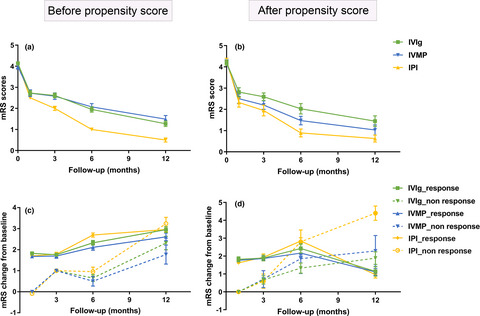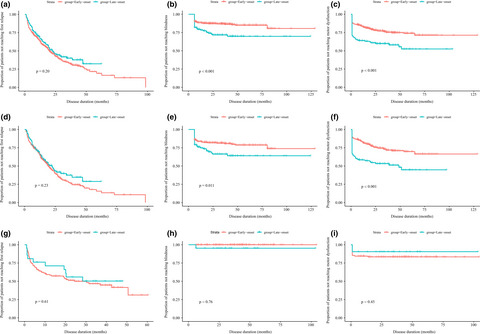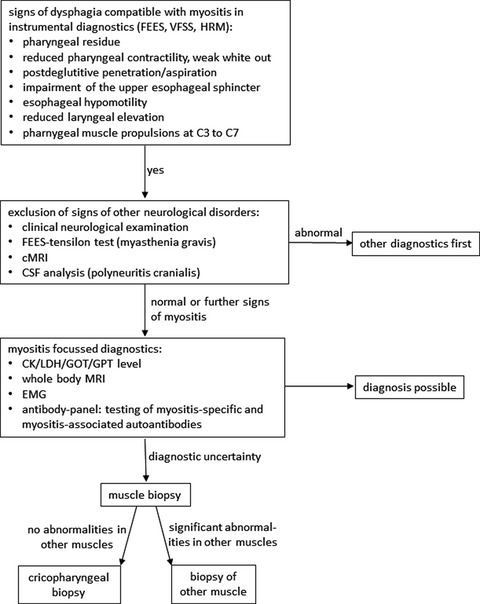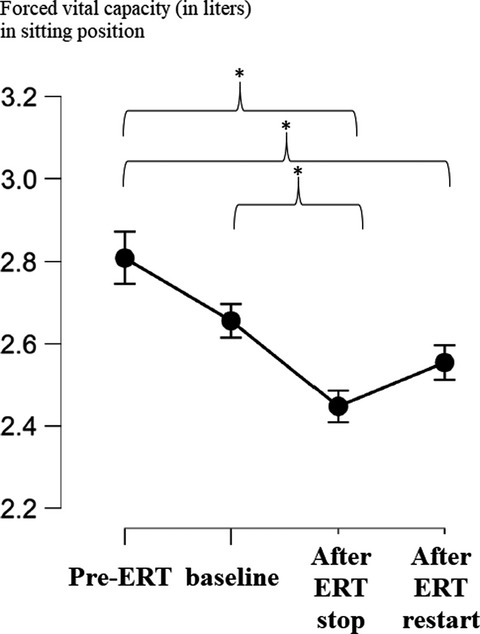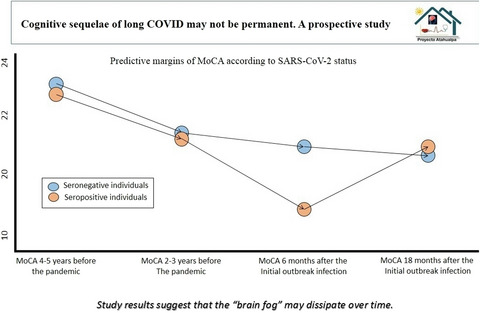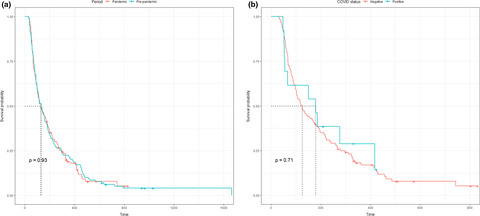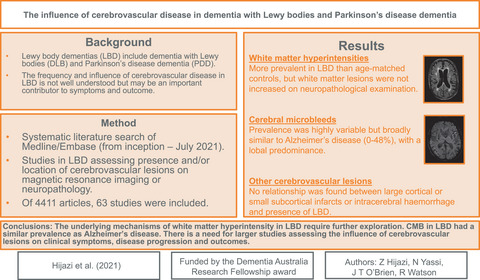Journal list menu
Export Citations
Download PDFs
Issue Information
Dementia and cognitive disorders
The severity of neuropsychiatric symptoms is higher in early-onset than late-onset Alzheimer’s disease
- Pages: 957-967
- First Published: 04 December 2021
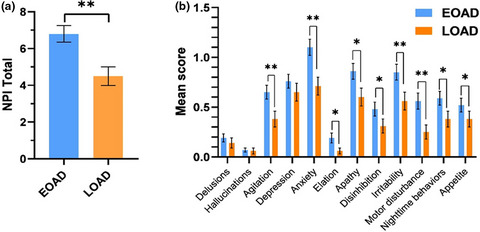
Neuropsychiatric symptoms are more severe in early-onset Alzheimer's disease than late-onset Alzheimer's disease across the disease course. It could suggest a pattern of selective vulnerability extending to the brain's subcortical structures. Co-pathologies such as argylophilic grain disease may also play a role in increasing neuropsychiatric symptoms.
Association of major blood lipids with post-stroke dementia: A community-based cohort study
- Pages: 968-979
- First Published: 17 December 2021
Longitudinal amyloid cognitive composite in preclinical Alzheimer’s disease
- Pages: 980-989
- First Published: 31 December 2021
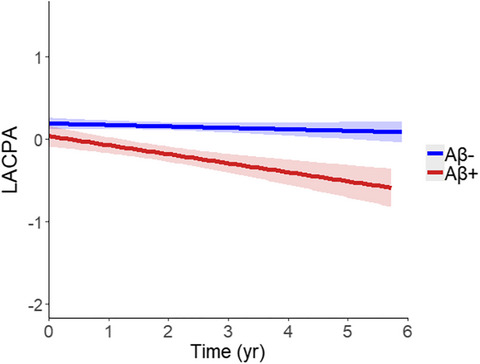
Longitudinal changes in Longitudinal Amyloid Cognitive Composite in Preclinical Alzheimer Disease (LACPA) score in cognitively normal participants. This study investigated longitudinal cognitive decline associated with amyloid-β (Aβ) in cognitively normal elderly individuals and developed the LACPA using cognitive tests that distinguished cognitive trajectories between Aβ+ and Aβ−. The LACPA may contribute to monitoring Aβ-related cognitive decline and therapeutic efficacy of disease-modifying agents specifically targeting Aβ.
ALS and frontotemporal dementia
Urinary neopterin: A novel biomarker of disease progression in amyotrophic lateral sclerosis
- Pages: 990-999
- First Published: 29 December 2021
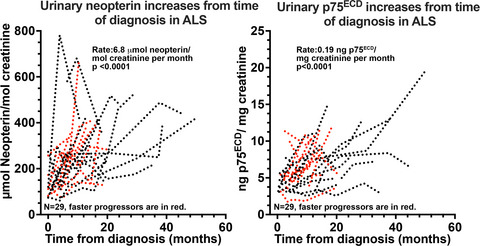
The pro-inflammatory marker urinary neopterin was investigated as a disease progression biomarker for amyotrophic lateral sclerosis. It was also compared to urinary p75 extracellular domain (p75ECD). Urinary neopterin and p75ECD progressively increased from diagnosis. Urinary neopterin might serve as a biomarker of an underlying pro-inflammatory state in amyotrophic lateral sclerosis.
Movement disorders
The effect of polygenic risk on white matter microstructural degeneration in Parkinson's disease: A longitudinal Diffusion Tensor Imaging study
- Pages: 1000-1010
- First Published: 09 December 2021
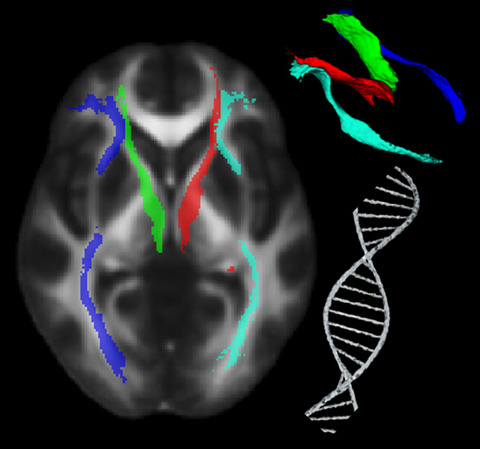
This study combined polygenic risk score (PRS) and longitudinal diffusion tensor imaging (DTI) data to investigate the effect of genetic risk on white matter (WM) integrity in patients with Parkinson disease (PD). We found PRS was associated with younger age at onset in PD patients, and the high-PRS group showed more extensive WM microstructural degeneration, mainly involving the anterior thalamic radiation (AThR) and inferior fronto-occipital fasciculus (IFOF). Furthermore, WM microstructural changes in AThR may lead to poor cognition with continuing dopamine depletion.
Stroke-related restless legs syndrome: Clinical and anatomo-functional characterization of an emerging entity
- Pages: 1011-1016
- First Published: 09 December 2021
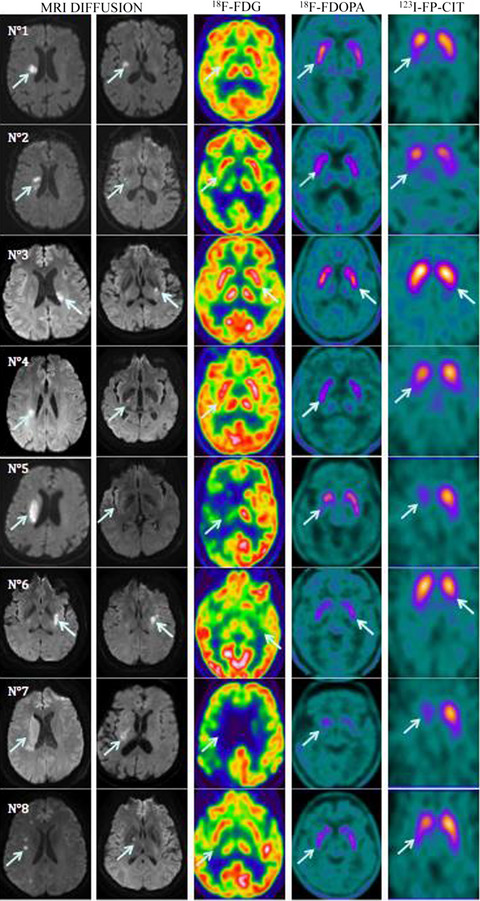
Stroke-related restless legs syndrome (sRLS) related to ischemic lesions is an emerging entity that we characterized clinically, neuroanatomically and functionally. The clinical characteristics of sRLS and idiopathic RLS were similar overall. Infarctions in sRLS patients most commonly affected the lenticulostriate area and the ventral brainstem. An increased dopaminergic tone in the striatum ipsilateral to lenticulostriate infarction was present. Both the corticospinal tract and the cortico-pontocerebellar fibers were lesioned in RLS related to brainstem stroke. Clinicians should be aware of the characteristics of sRLS for the appropriate diagnosis and treatment of this condition.
Prevalence and genotype–phenotype correlations of GBA-related Parkinson disease in a large Chinese cohort
- Pages: 1017-1024
- First Published: 23 December 2021
Ambulatory blood pressure and drug treatment for orthostatic hypotension as predictors of mortality in patients with multiple system atrophy
- Pages: 1025-1034
- First Published: 31 December 2021
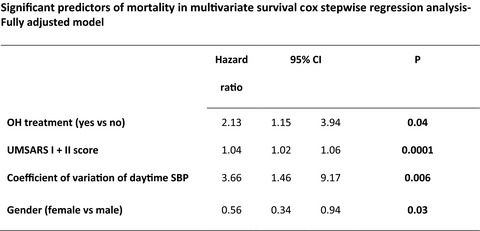
We here investigated the prognostic factor of ambulatory blood pressure (BP) and orthostatic hypotension (OH) treatment on mortality in a cohort of 129 multiple system atrophy (MSA) patients. The main findings were independent associations between male gender, disease severity (UMSARS), daytime BP variability and OH treatment with mortality in MSA patients.
Abnormal dynamic brain activity and functional connectivity of primary motor cortex in blepharospasm
- Pages: 1035-1043
- First Published: 28 December 2021
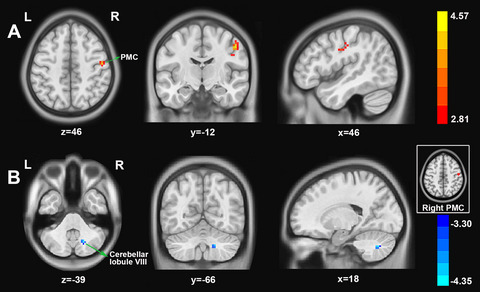
Patients with blepharospasm exhibited increased dynamic amplitude of low-frequency fluctuations in the right primary motor cortex (a) and decreased dynamic functional connectivity strength between the right primary motor cortex and ipsilateral cerebellum (b) compared with healthy controls. Blepharospasm may be a network disorder involving the cerebello-cortical circuits.
Amantadine treatment and delayed onset of levodopa-induced dyskinesia in patients with early Parkinson's disease
- Pages: 1044-1055
- First Published: 28 December 2021
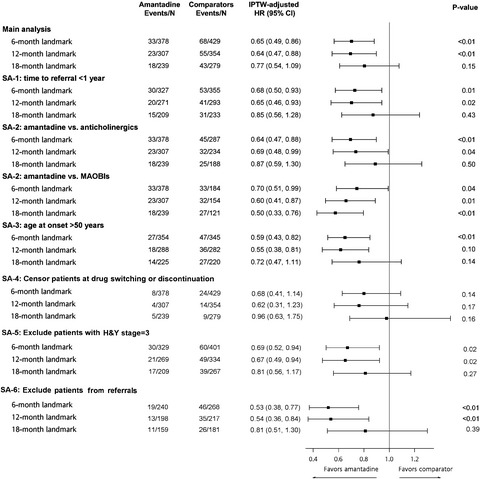
This hospital-based retrospective cohort study revealed that early treatment with amantadine is associated with delay onset of levodopa-induced dyskinesia in patients with early Parkinson's disease. In addition, a potential heterogeneous treatment effect was found by predominant motor features. Longer use of amantadine appears to have greater beneficial effect in patients with akinetic-rigid motor subtype, but not in patients with tremor predominant motor subtype.
Stroke
Association of symptomatic atherosclerotic carotid arteries with plaque areas showing low densities on computed tomographic angiography
- Pages: 1056-1061
- First Published: 23 December 2021
Infectious Diseases
Reduction in cerebral oxygen metabolism in subcortical regions may be a biomarker of cognitive decline in people living with human immunodeficiency virus
- Pages: 1062-1074
- First Published: 25 November 2021
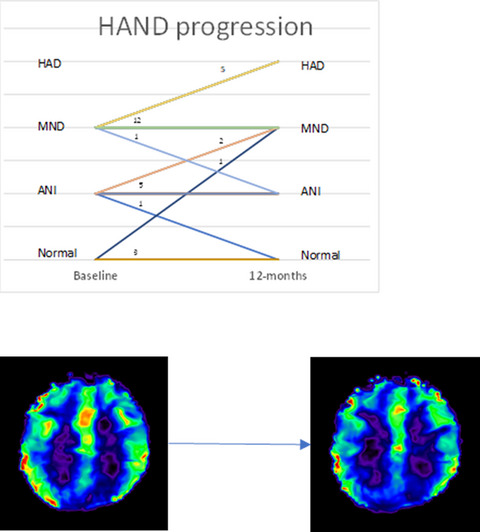
In recently diagnosed people living with human immunodeficiency virus (HIV) (N = 30), worsening of HIV-associated neurocognitive disorder was found at 12 months on antiretroviral therapy in 27% of subjects, stable/improvement in the remaining 73%. No association was found between regional cerebral blood flow or regional cerebral oxygen metabolism and cognitive impairment at baseline. There was a reduction in subcortical cerebral oxygen metabolism in those with worsening of cognitive function at 12 months on antiretroviral therapy. Reduction in cerebral oxygen metabolism may be a biomarker of cognitive decline in people living with HIV.
Multiple Sclerosis
Menopause does not modify disability trajectories in a longitudinal cohort of women with clinically isolated syndrome and multiple sclerosis followed from disease onset
- Pages: 1075-1081
- First Published: 20 February 2021
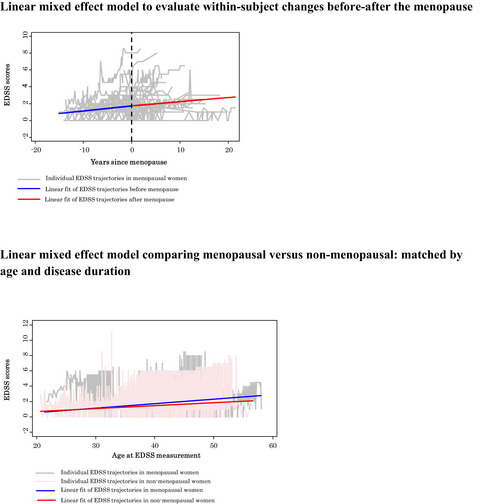
We examined the longitudinal changes in Expanded Disability Status Scale (EDSS) from clinically isolated syndrome (CIS) until the last follow-up in 496 women belonging to the Barcelona CIS prospective cohort. The within-subject changes before–after the menopause did not show a significant inflection point around menopause. Global EDSS trajectories based on 13,718 EDSS measurements, with an average of 28 EDSS measurements per patient, were not significantly different between menopausal and nonmenopausal women when controlling for age and disease duration. The same results were obtained for the subgroup of women with confirmed multiple sclerosis.
Risk of requiring a wheelchair in primary progressive multiple sclerosis: Data from the ORATORIO trial and the MSBase registry
- Pages: 1082-1090
- First Published: 16 March 2021
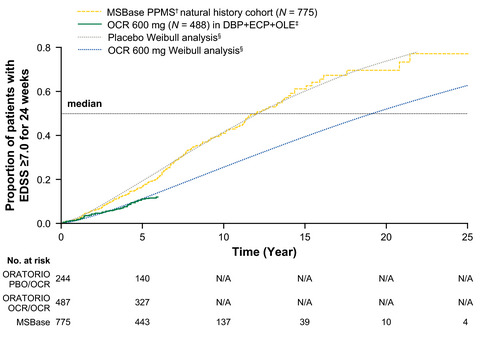
Extrapolated data from the ORATORIO trial suggest ocrelizumab treatment delays the median time to requiring a wheelchair by 7.1 years versus placebo. Similar disability trajectories observed in real-world data from the MSBase registry and initial data from the ORATORIO open-label extension support the plausibility of these extrapolations.
Incidence and risk of cancer among multiple sclerosis patients: A matched population-based cohort study
- Pages: 1091-1099
- First Published: 22 December 2021

This study compared the incidence of cancer between patients with multiple sclerosis (MS) and the general population, using the nationwide French health care database (Système National des Données de Santé) and its representative sample (Echantillon Généraliste de Bénéficiaires). Overall, 576 cancers per 100,000 patient years (PY) were observed in MS patients versus 424 per 100,000 PY in the general population, resulting in a hazard ratio (HR) of 1.36 (95% confidence interval [CI] = 1.29–1.43). In addition, an increased risk of specific cancers was found in MS patients, including prostate (HR = 2.08, 95% CI = 1.68–2.58), colorectal and anal (HR = 1.35, 95% CI = 1.16–1.58), trachea, bronchus, and lung (HR = 2.36, 95% CI = 1.96–2.84), and breast cancer (HR = 1.12, 95% CI = 1.03–1.23).
Difficulty in identification of patients with active secondary progressive multiple sclerosis by clinical classification tools
- Pages: 1100-1105
- First Published: 22 December 2021
Early first-line treatment response and subsequent disability worsening in relapsing–remitting multiple sclerosis
- Pages: 1106-1116
- First Published: 20 December 2021
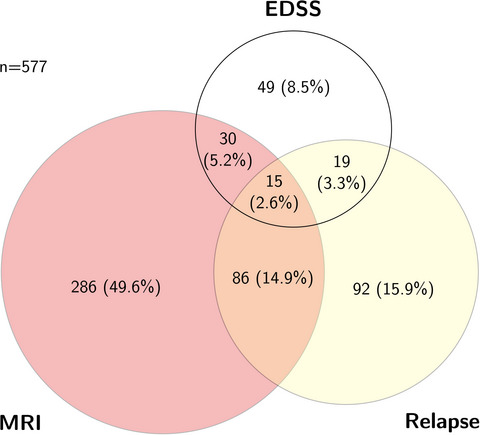
Relapses and magnetic resonance imaging (MRI) activity in the first 6 or 12 months on treatment are usually used to determine treatment success in relapsing–remitting multiple sclerosis. An investigation using a large trial dataset shows that current definitions of early treatment success are unrelated to patient-relevant disability worsening at 36 months of follow-up. Failure to achieve "no evidence of disease activity" (NEDA-3) occured due to MRI activity in approximately 70% of cases, and due to Expanded Disability Status Scale worsening in less than 10% of cases.
Neuroimmunology
Efficacy and tolerability of intravenous immunoglobulin versus intravenous methylprednisolone treatment in anti-N-methyl-d-aspartate receptor encephalitis
- Pages: 1117-1127
- First Published: 16 December 2021
Late onset neuromyelitis optica spectrum disorder with anti-aquaporin 4 and anti-myelin oligodendrocyte glycoprotein antibodies
- Pages: 1128-1135
- First Published: 30 December 2021
Rare Neurological Diseases
Spinal dural leaks in patients with infratentorial superficial siderosis of the central nervous system—Refinement of a diagnostic algorithm
- Pages: 1136-1144
- First Published: 24 October 2020
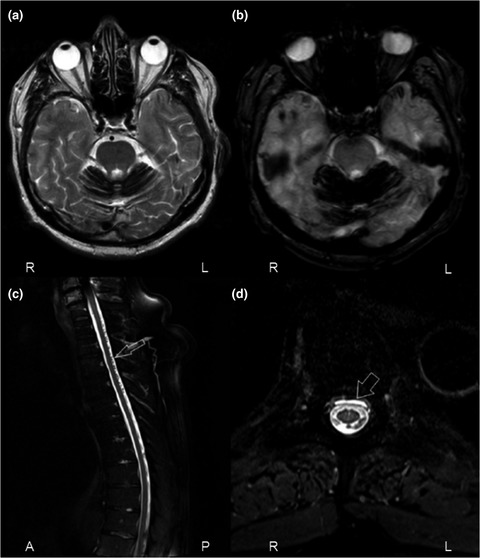
Screening was carried out on 97,733 magnetic resonance images performed in our neurocenter for superficial siderosis. Patients with a symmetric infratentorial siderosis pattern in brain magnetic resonance imaging were prospectively evaluated for spinal dural cerebrospinal fluid leaks. Our results show that persisting spinal dural cerebrospinal fluid leaks can frequently be identified in patients with a symmetric infratentorial siderosis pattern, and therefore diagnostic workup in these cases should include magnetic resonance imaging of the whole spine.
Neuropathies
Increased mortality following Guillain–Barré syndrome: A population-based cohort study
- Pages: 1145-1154
- First Published: 07 December 2021
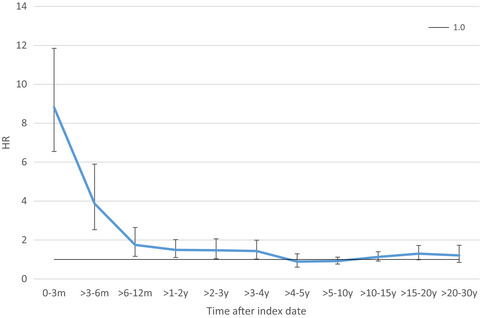
During the first 6 months after Guillain–Barré syndrome (GBS) hospital admission, GBS was associated with a 6.6-fold increased mortality as compared with the background population of the same age. Mortality remained increased for approximately 4 years following GBS, and then leveled off to a similar long-term mortality rate.
Potential biomarkers identified by tandem mass tags based quantitative proteomics for diagnosis and classification of Guillain–Barré syndrome
- Pages: 1155-1164
- First Published: 16 December 2021
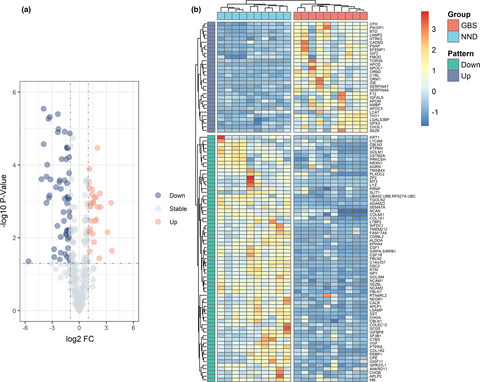
Comparative proteomics analysis was performed on the cerebrospinal fluid (CSF) from 10 patients with Guillain–Barré syndrome (GBS) and 10 patients with noninflammatory neurological disease (NND) using the tandem mass tags technique. 298 proteins were successfully identified in the CSF samples, of which 97 differentially expressed proteins were identified in the GBS and NND groups. The CSF protein expression profile of patients with GBS is different from that of patients with NND.
Muscle and neuromuscular junction disorders
Detecting myositis as a cause of unexplained dysphagia: Proposal for a diagnostic algorithm
- Pages: 1165-1173
- First Published: 04 December 2021
Biallelic truncating variants in the muscular A-type lamin-interacting protein (MLIP) gene cause myopathy with hyperCKemia
- Pages: 1174-1180
- First Published: 22 December 2021
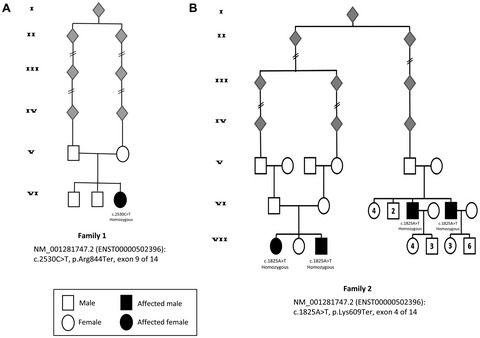
This study reports the association of biallelic truncating variants in the muscular A-type lamin-interacting protein (MLIP) gene with human disease in five individuals from two unrelated pedigrees. The reported MLIP-associated disorder causes abnormally elevated creatine kinase levels and may also include exertion-induced myalgia, muscle decompensation and fatigability during low-to-moderate muscle exertion, and cardiac involvement.
Motor and respiratory decline in patients with late onset Pompe disease after cessation of enzyme replacement therapy during COVID-19 pandemic
- Pages: 1181-1186
- First Published: 20 December 2021
The association between anti-acetylcholine receptor antibody level and clinical improvement in myasthenia gravis
- Pages: 1187-1197
- First Published: 30 December 2021
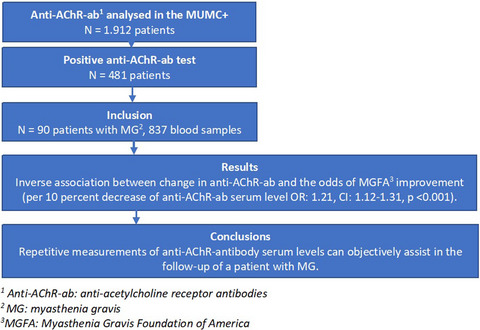
Multilevel logistic regression analysis showed a significant inverse association between change in anti-acetylcholine receptor (AchR) antibody (ab) level and the odds of improvement, measured by the Myasthenia Gravis Foundation of America. A change in anti-AChR-ab serum level is associated with clinical status in patients with MG. Repetitive measurements of anti-AChR-ab serum levels can objectively assist in the follow-up of a patient with MG.
Headache
Rapid response to galcanezumab and predictive factors in chronic migraine patients: A 3-month observational, longitudinal, cohort, multicenter, Italian real-life study
- Pages: 1198-1208
- First Published: 26 November 2021
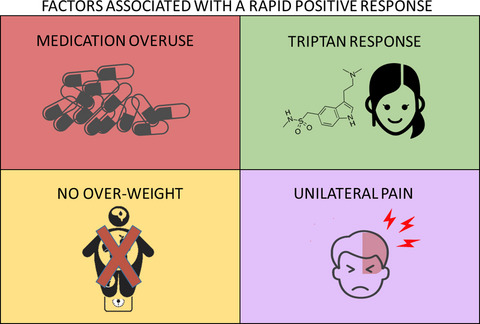
Rapid response to preventive therapy and its possible predictive factors are fundamental in patients with chronic migraine (CM). In our study, galcanezumab reduced monthly headache days by at least 50% from baseline in >50% of our real-life CM patients after the first month, in about two thirds after 3 months, and in >40% during all 3 months of treatment. More than 60% of subjects discontinued medication overuse (MO) during all 3 months of treatment. Unilateral pain, good response to triptans, normal weight, and MO at baseline appeared to be associated with a positive response.
Clinic and genetic predictors in response to erenumab
- Pages: 1209-1217
- First Published: 29 December 2021
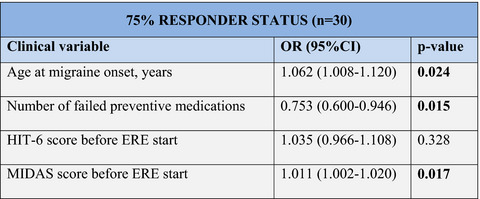
Clinical predictors of a 75% or higher reduction in monthly migraine days during 3-month erenumab treatment were older age at migraine onset, lower number of failed preventive medications, and higher migraine burden as measured by the Migraine Disability Assessment score questionnaire. At multivariate analysis, no single nucleotide polymorphisms (SNPs) at calcitonin receptor like receptor (CALCRL) and RAMP1 were found to be an independent predictor of treatment response, despite a modest effect of SNPs cannot be ruled out due to the limited sample size of our study.
Dementia and cognitive disorders
Cognitive sequelae of long COVID may not be permanent: A prospective study
- Pages: 1218-1221
- First Published: 16 December 2021
Impact of the COVID-19 pandemic on Creutzfeldt–Jakob disease surveillance and patient care in the United Kingdom
- Pages: 1222-1226
- First Published: 23 December 2021
Movement disorders
Factors associated with augmentation in patients with restless legs syndrome
- Pages: 1227-1231
- First Published: 18 December 2021
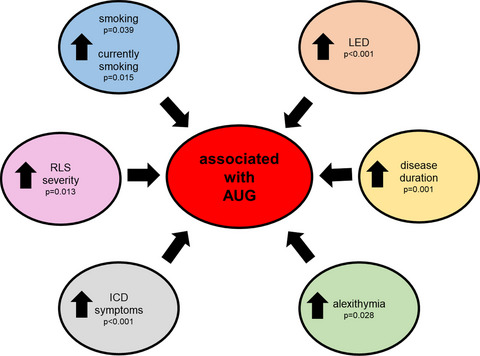
Augmentation (AUG) is a paradoxical reaction mainly to dopaminergic medication in patients with restless legs syndrome (RLS), but the exact pathomechanism remains unclear. Here, we describe several factors commonly associated with augmentation in RLS. Patients with augmentation had a longer disease duration (p = 0.001), higher RLS severity scores (p = 0.013), higher levodopa equivalent doses (LED) (p < 0.001), higher scores for alexithymia (p = 0.028), a higher prevalence of impulse control disorders (ICDs) (p < 0.001), had more often a history of smoking (p = 0.039), were more often currently smoking (p = 0.015), and had more average pack-years (p = 0.016).
Impact of HIV impact on outcomes of deep-brain stimulation of the subthalamic nucleus for Parkinson’s disease
- Pages: 1232-1237
- First Published: 30 December 2021
Multiple Sclerosis
Risk of requiring a walking aid after 6.5 years of ocrelizumab treatment in patients with relapsing multiple sclerosis: Data from the OPERA I and OPERA II trials
- Pages: 1238-1242
- First Published: 16 March 2021
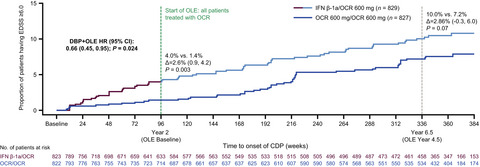
Data from the OPERA I and OPERA II trials in relapsing multiple sclerosis show that earlier ocrelizumab (OCR) use delays the time to requiring a walking aid (Expanded Disability Status Scale score ≥6.0). Differences in disability progression between OCR–OCR continuers versus interferon–OCR switchers were evident throughout the open-label extension, indicating that switching to OCR is never as effective as earlier treatment, and does not reverse lost function. These results demonstrate the benefit of early and continuous OCR treatment.
Movement disorders
Relationship between COVID-19 and movement disorders: A narrative review
- Pages: 1243-1253
- First Published: 16 December 2021
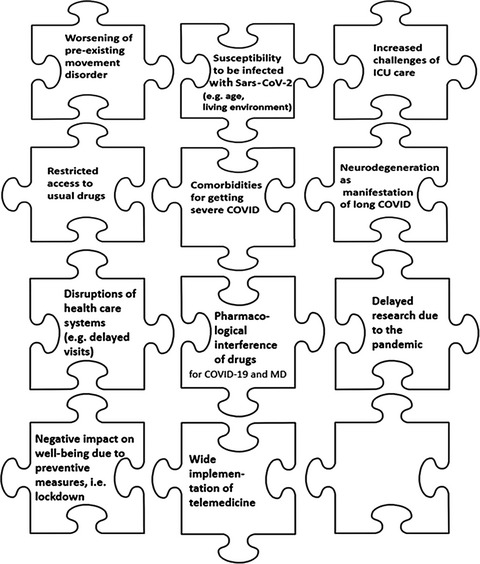
New onset movement disorders may occur in the acute phase of an infection with Sars-CoV-2, whereas movement disorders as an adverse event after vaccination are rare according to large drug safety report databases. There is concern that Sars-CoV-2 may trigger a hit-and-run mechanism and predispose to the development of neurodegenerative disorders, similar to what was observed after the Spanish flu in 1918 and the subsequent wave of encephalitis lethargica. The pandemic and the associated preventive measures have had a negative impact on the clinical status, access to health care, and overall well-being of patients with pre-existing movement disorders.
The influence of cerebrovascular disease in dementia with Lewy bodies and Parkinson's disease dementia
- Pages: 1254-1265
- First Published: 19 December 2021
Neuropathies
Technology outcome measures in neuromuscular disorders: A systematic review
- Pages: 1266-1278
- First Published: 28 December 2021
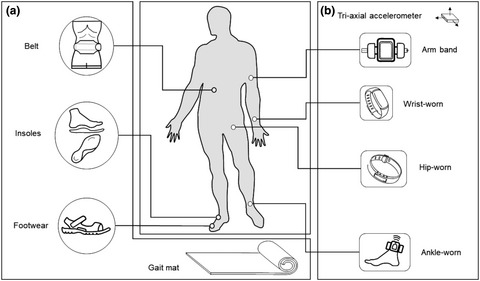
As novel targeted therapies for patients with neuromuscular disorders are on the horizon, there is a general demand for valid and objective outcome measures for motor function assessment. This is a systematic review of all studies reporting the use of portable and wearable technological devices for motor function assessment in neuromuscular disorders. The objective is to raise awareness of the potential of the different technological outcome measures in the neuromuscular field and to be an informative source for the design of future clinical trials.
ALS and frontotemporal dementia
Respiratory onset of amyotrophic lateral sclerosis in a pregnant woman with a novel SOD1 mutation
- Pages: 1279-1283
- First Published: 07 March 2022
Muscle and neuromuscular junction disorders
Sirolimus leads to rapid and sustained clinical improvement of motor deficits in a patient with inclusion body myositis
- Pages: 1284-1287
- First Published: 07 March 2022
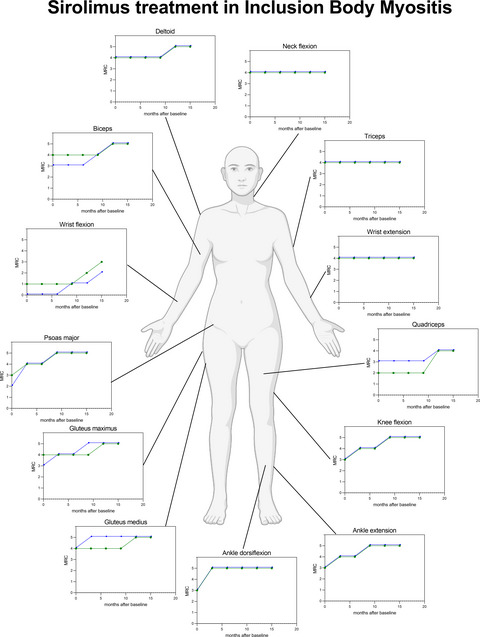
Treatment with sirolimus 2 mg/day by mouth in a patient with inclusion body myositis resulted in rapid and sustained clinical improvement of motor symptoms without adverse effects. We did not observe a meaningful alteration of CD8+ T-cell subsets in our patient after 9 and 12 months compared to baseline. The substantial and persistent clinical improvement without immunological treatment effects recorded for cytotoxic CD8+ T cells as observed in our patient may be indicative of the myoprotective effects of sirolimus.




